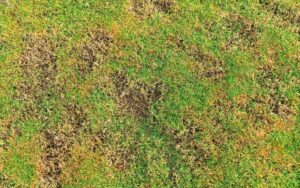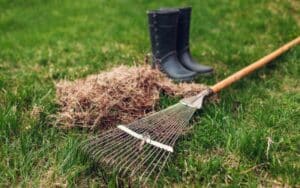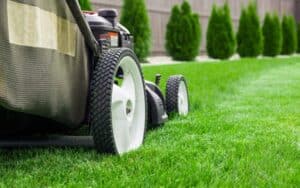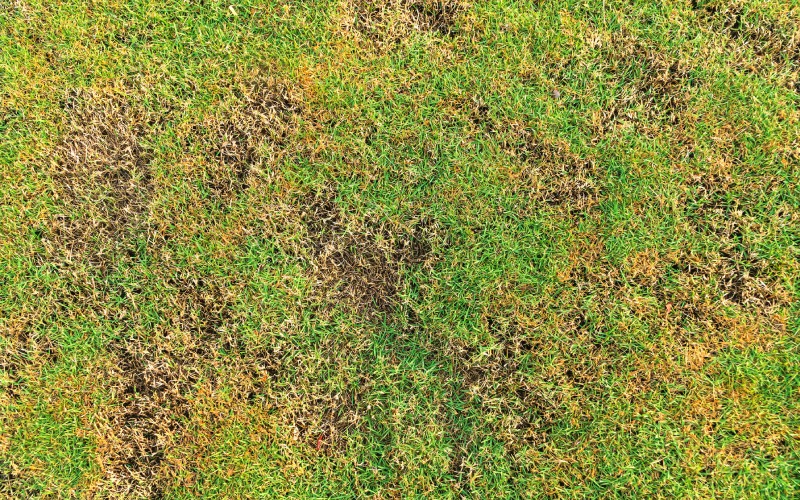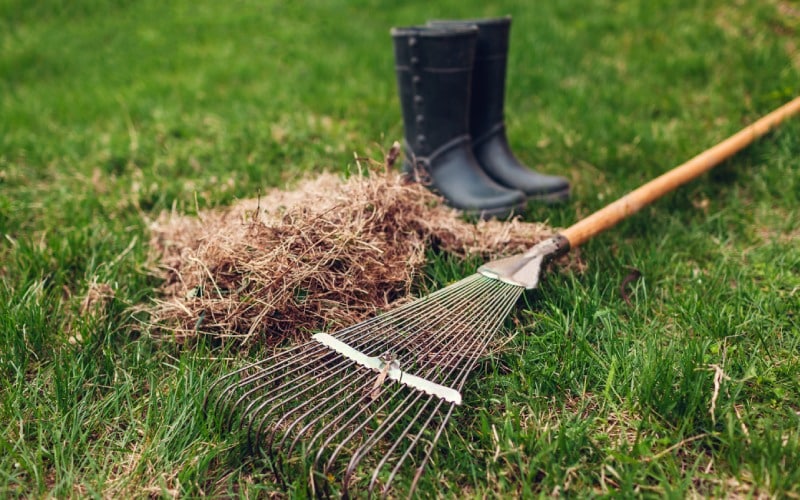After a long period of cold weather, your lawn may look tired with those yellow and brown patches. To a certain extent, your lawn will start to recover on its own as it springs up from dormancy, but there are some things you can do to help bring back your grass and reestablish its dense, green appearance in a short time.
Winter is the calmest period for your lawn, and it is best not to disturb it by limiting foot traffic. Spring is the most critical time to rev up your lawn. Here are a few helpful tips for taking care of the lawn once the snow melts.
The Necessary After Winter Lawn Care
Perform An Early Spring Clean-Up
Following a harsh winter, there’s a huge probability that there is a bunch of waste in your yard, like scattered leaves, twigs, tree branches and other debris. Picking up trash will allow enough sunlight, oxygen, and water to make it to the grasses and their roots.
If the snow gets piled up in one particular spot, it can cause great damage to new grass growth. Concerning this, spread the snow evenly over the lawn. A blanket of snow can help retain moisture in the soil, eventually supplying that necessary water to the ground and your grass as it melts by early spring.
Dethatching Dead Grass
Plan to dethatch your lawn when the thickness of the dead grass is over one-half inch. Dethatching allows the grassroots to receive the water, fertilizer, oxygen, and other nutrients required.
Experts advised not to dethatch too early in spring because this will shock the weak new grass that is still germinating. Mid to late spring is the best time to dethatch since your lawn has had time to dry off and the grass has re-established itself.
A thatch problem is expected in acidic or compacted soil, including turf with heavy nitrogen fertilizer or pesticide application.
For a small yard, use a dethatching rake. Push the rake tines deep down through the grass so they access the layer underneath and pull the grass to the surface. For a more extensive lawn or a yard with a severe thatch problem, a power rake or vertical rake quickly pulls the dead grass to the surface as they slice the thatch layer.

Aerate The Lawn
Alleviate compaction by aerating your lawn so fresh air, water and nutrients can reach the grass roots. With a manual spike/core aerator, poke holes into the ground with a solid, spike-like tine. If you have a large yard, you should rent a power aerator. Core aerators are usually available for rent at improvement stores and garden centers.
You won’t need to aerate the soil if you have healthy organic soil with many microbes and earthworms. Worms aerate the soil, providing for improved circulation.
Aerating is a vital early spring lawn care advice as it encourages deeper roots, making your lawn healthier.
Eliminate Weeds
Cold weather causes weeds to take over your lawn. The sooner you eliminate them, the less chance they will grow and spread. Gently tug the weed, along with the roots, to prevent it from growing back.
Planting New Grass Seed, or Overseeding
The next step is to sprinkle grass seeds over the bare patches, then cover them with about half an inch of compost or topsoil. This creates the perfect condition to promote seed germination and offsets the thinning process during the winter. Overseeding is an outstanding way to introduce new growth to your yard and keep it green the entire year.
Lawn Fertilization
When the ground temperatures reach an average of 55°F for 4 or 5 days, feed your grass with a healthy snack to stimulate growth for the spring. Lawn fertilizer is crucial in growing and maintaining a green, healthy lawn. Use organic fertilizers as they’re eco-friendly and won’t damage your lawn. Before fertilizing, read the product instructions and recommendations on the fertilizer bag for your grass type.

Mow Your Lawn
Trim a small amount of your grass on the first mow. Make sure to cut only a third of the grass blades at a time, or you may weaken the grass plants. Mowing promotes the grass to grow stronger, healthier, and greener.
Additionally, mowing regularly keeps weeds down. But if you need to apply weed killers, do it during fall, and only spot application on the problem weeds. Apply a weed control product specific to the type of grass you have. Use a broadcast spreader to distribute the weed killer evenly to the lawn.
Caring For Your Lawn After The Coldest Months
These tips will undoubtedly toughen your lawn, ready to withstand extreme heat and droughts and prevent weed infestation later in the growing season.
A healthy lawn still needs a spring lift, even in places that don’t usually experience winter weather. And same as spring cleaning, following the appropriate lawn care routine in the fall is equally essential when keeping its vigor during the long winter months.
If you have no time to clean up this fall, give Riverwood Landscape a call. We provide high-quality Guelph Fall Cleanup Services and Lawn Maintenance Services for the whole year, guaranteeing that your residential or commercial property always looks in its best shape and condition.







